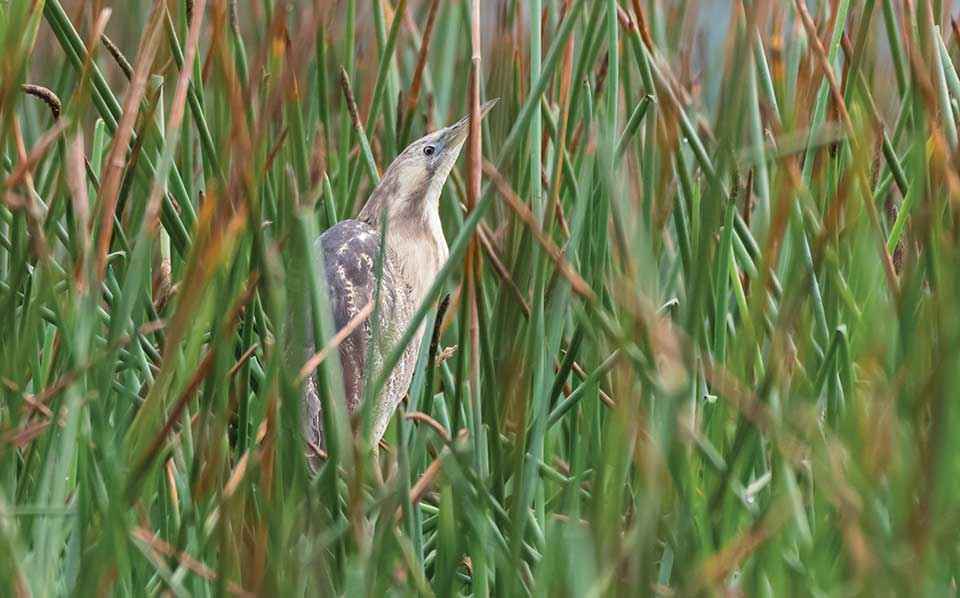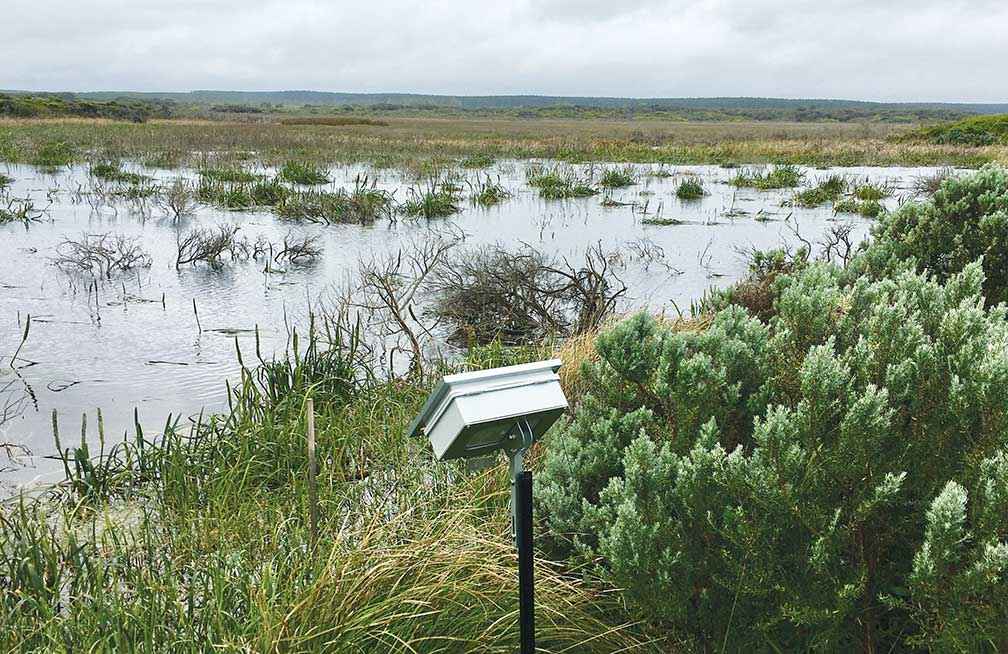Victorian Landcare Magazine - Winter 2022, Issue 84

Australasian bitterns were once widespread across the reedy wetlands of south-eastern Australia, but the degradation and loss of its habitat through development, farming, and the damming of watercourses has caused steep population declines.
These notoriously secretive birds are masters of camouflage. Despite being relatively tall they manage to keep a low profile in wetlands with their brown streaked plumage helping them to blend in.
A resident population of Australasian bittern on the coast of the Glenelg Hopkins catchment and inland around Gariwerd Aboriginal cultural landscape, are the focus of an ambitious monitoring scheme, which forms an essential part of the Australasian Bittern Recovery Project.
Many partners are involved in the recovery project which includes monitoring, critical baseline data collection, hydrological restoration of drained wetlands, improving privately-owned bittern habitat through weed and pest control, and creating greater structural diversity in dense stands of reeds through Aboriginal fire management practices.
In September 2020, BirdLife Australia trialled a stewardship program across the catchment with volunteers recruited to deploy and maintain an acoustic monitor at their local wetland. The Glenelg-Hopkins Soundscape Project is supported by the Victorian Government through the Volunteering Innovation Fund, and by the Glenelg Hopkins CMA through funding from the Australian Government.
Volunteers were provided with a low-cost, low-power recording unit that recorded up to five hours of acoustic data each day.

Above: A listening post established by volunteers to monitor the unique soundscape of Long Swamp,
near the mouth of the Glenelg River in Victoria.
We recruited a team of 10 volunteers who committed to monitoring Lake Burrumbeet, Bryans Swamp, Portland Aluminium Smelter, Judiths Swamp near Naringal, and a Trust for Nature wetland near Portland West.
They diligently replaced batteries and harvested data over the bittern booming period from September to March 2020 when the birds were establishing territory and attracting mates. During this time Melbourne was in the midst of the world’s longest COVID-19 lockdown so volunteers were able to undertake critical work in the field while the bittern recovery team was restricted to the city.
The recording units yielded more than 10,000 hours of recordings – a monumental amount of data, which created a significant processing challenge.
In April 2021, BirdLife Australia was successful in an application to the Victorian Government’s Volunteering Innovation Fund. These funds allowed us to convert temporary sound logs to semi-permanent listening posts and to recruit a dedicated team of listeners from the large and diverse network of BirdLife Australia supporters across the country.
The volunteer listeners were trained to use the free online platform Arbimon to systematically work through the recordings and confirm the presence or absence of Australasian bittern. While this has produced critical insights into the Australasian bittern breeding season, it also allowed our listeners to form relationships to wetlands thousands of kilometres away. Listeners as far north as Brisbane were listening to bitterns on the south coast of Victoria.
According to volunteer listener Glen White, the boom of the Australasian bittern is very unmusical but she still found the experience hugely rewarding.
“Mine is a small part in the conservation efforts to support the species and I recognise the importance of involving
non-professionals, such as everyday birders in assisting with the conservation work. And it is fun. I enjoy hearing the other birdcalls and I have learnt to identify a number of frog calls. I am quite certain I will know a bittern call next time I’m out in the swamps,” Glen said.
The information emerging from this exercise is exciting. In total more than 150 hours of recordings containing an Australasian bittern boom have now been identified.
A preliminary assessment of this data suggests that Australasian bitterns are detected more frequently at dawn, given the still wind conditions. Booming peaks in November and diminishes steeply by the end of summer.
The data will help us focus our monitoring efforts so we can determine new bittern sites more efficiently and determine when to implement management interventions so they will have the least impact on breeding.
Our hardworking and committed teams of on-ground volunteers and listeners have been critical in helping us to develop a greater understanding of the bittern and we have no doubt they will be part of uncovering more insights in the future.
As well as Australasian bittern, the listeners have also identified at least 78 other species. Frog ecologists have requested the data on the endangered growling grass frog. Brolga are another favourite, always generating a buzz when they turn up in the recordings.
Bradley Clarke-Wood is Wetland Bird Program Coordinator for Birdlife Australia.
For more information email bradley.clarke-wood@birdlife.org.au
With so much audio data and so many potential species to identify, BirdLife Australia is calling for more volunteers to help decode the wetland recordings. The listening can be done at home on your own computer with an Internet connection. Full training is provided.
Volunteers are also needed to head out to key wetlands at dawn and dusk to conduct listening surveys and help us identify other sites. Training in conducting listening surveys will be provided.